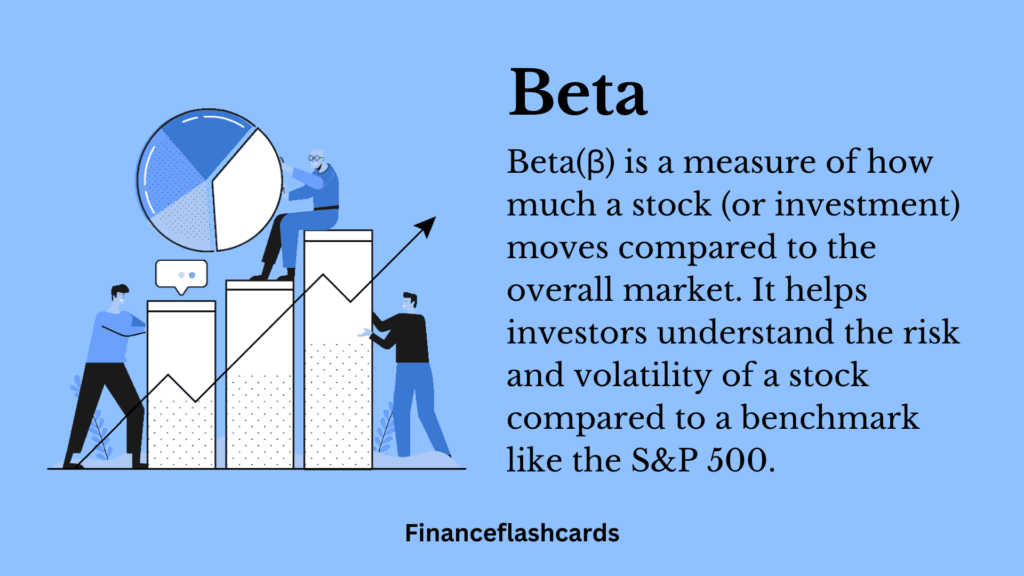Beta(β) is a measure of how much a stock (or investment) moves compared to the overall market. It helps investors understand the risk and volatility of a stock compared to a benchmark like the S&P 500. It provides an investor with an approximation of how much risk a stock will add to a portfolio.
Table of Contents
Beta (β) is the Greek alphabet used in finance to measure of how much a stock (or investment) moves compared to the overall market. It helps investors understand the risk and volatility of a stock compared to a benchmark like the S&P 500.
The S&P 500, which typically has a beta of 1.0. Compared to the S&P 500, stocks with betas greater than 1.0 are thought to be more volatile

How Beta Works
A beta coefficient displays a stock’s volatility in relation to the market’s overall systematic risk.
For instance, if a stock has a beta of 1, it moves in sync with the market; a 1% market rise or fall will likely lead to a corresponding 1% change in the stock price.
If beta is greater than 1, the stock is more volatile, amplifying market movements; for example, a beta of 1.5 indicates that the stock may rise 1.5% for every 1% market gain but could also fall 1.5% for every 1% market loss.
Calculating Beta
The formula for Beta calculation is:
β=Cov(Rs,Rm)Var(Rm)
Where:
Rs= Return on individual stock
Rm= Return on market
Covariance(Cov)= How changes in a stock’s returns are related to changes in the market’s returns
Variance= How far the market’s data points spreadout from their average value.
Interpretation
- Beta = 1: The stock moves exactly like the market. A 10% market rise means the stock typically rises 10%. Although adding a stock with a beta of 1.0 to a portfolio does not increase risk, it also does not raise the possibility that the portfolio will generate an excess return.
- Beta > 1: The stock amplifies market movements. A beta of 1.5 means a 10% market rise could lead to a 15% stock rise, and a 10% market drop could lead to a 15% stock drop. The betas of technology stocks are typically higher than those of the market benchmark. The risk of a portfolio will rise when a stock is added, but the return could also rise.
- Beta < 1: The stock is less reactive to market changes. A beta of 0.5 means a 10% market rise may result in a 5% stock rise.Utility stocks often have low betas because they move more slowly than market averages.
- Beta < 0: Rare, but it indicates the stock moves in the opposite direction of the market. Put options are designed with negative betas. There are a few industry groups, such as gold miners, where a negative beta is common.
Limitations
Beta doesn’t account for company-specific risks or non-market factors, and its relevance can change with market conditions or the time period used for calculation.
Additionally, it overlooks severe risks or large losses that can occur during downturns. For a more complete risk assessment, beta should be used alongside other analytical tools.

















